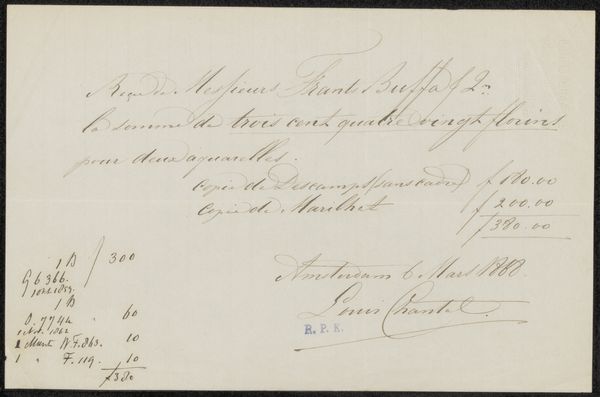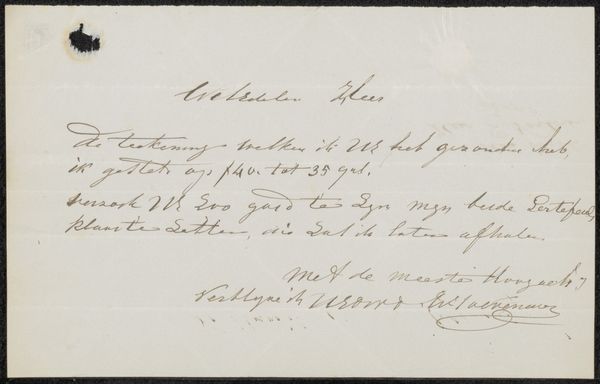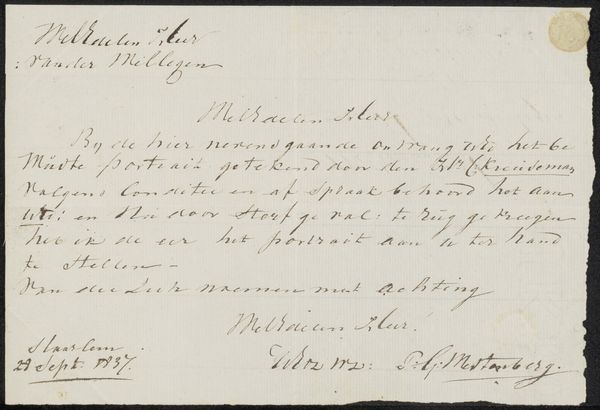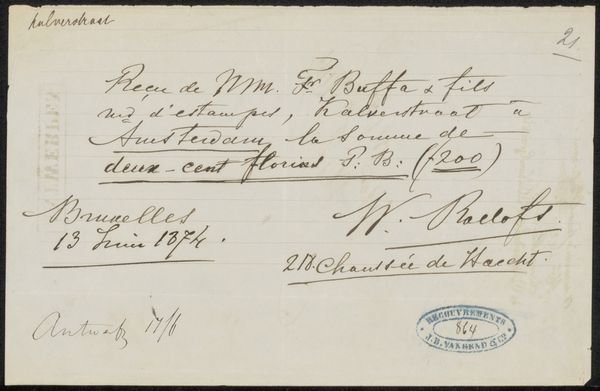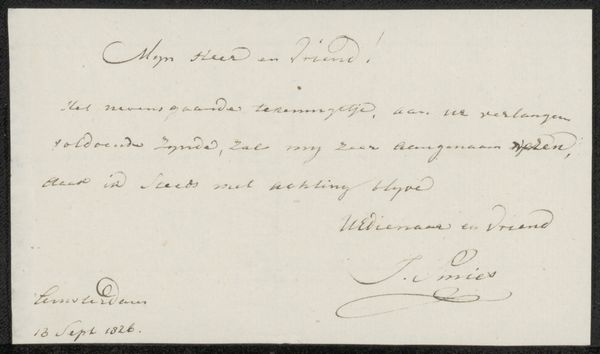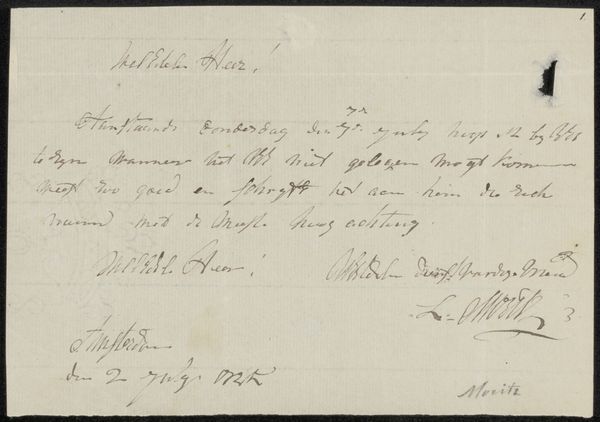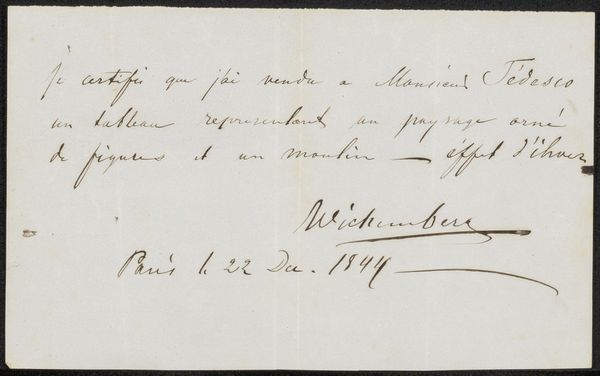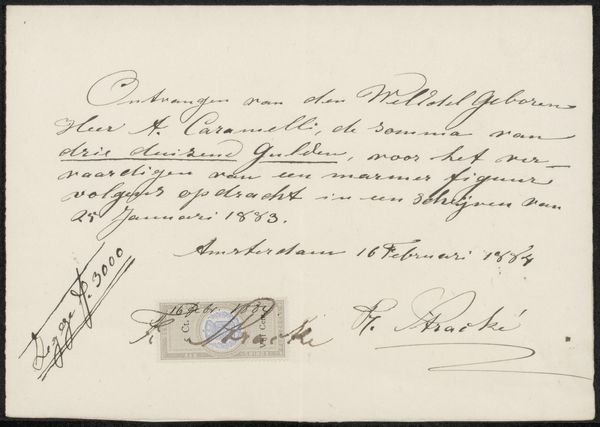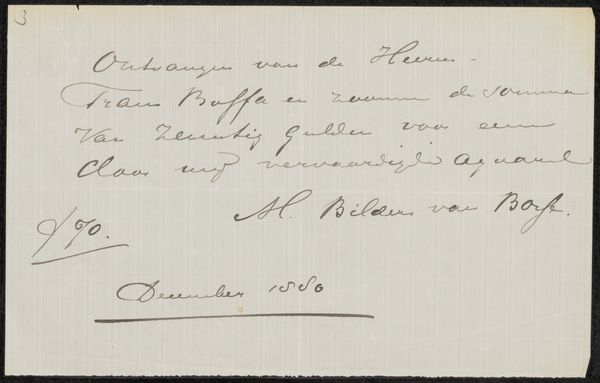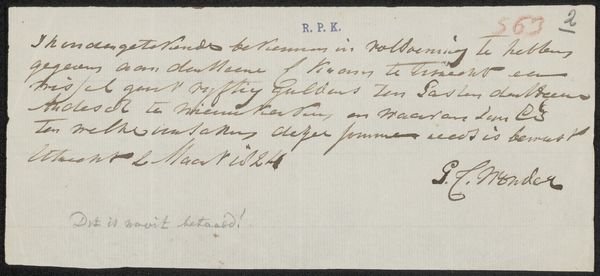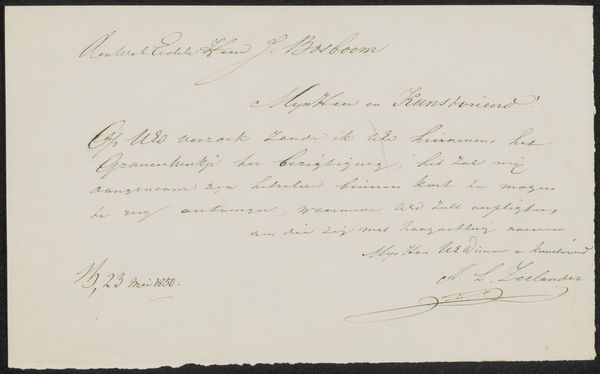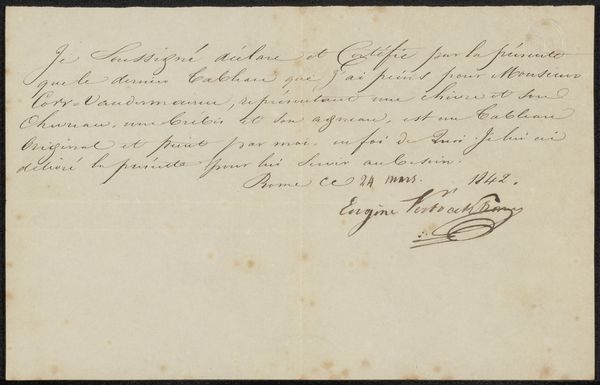
drawing, paper, ink
#
drawing
#
hand written
#
paper
#
ink
#
hand-written
#
intimism
#
calligraphy
Copyright: Rijks Museum: Open Domain
This receipt, penned by Hendrik Albert van Trigt in Amsterdam in 1868, bears more than just a monetary transaction; it carries the weight of cultural symbolism. The inscription refers to watercolors titled "Mother's Care," an iconic motif resonating through centuries. Consider the "Pietà," where Mary cradles the deceased Christ, a profound expression of maternal sorrow and protection. This image echoes in Renaissance paintings of the Madonna and Child, where Mary's gaze embodies nurturing love and unwavering support. The archetype of the nurturing mother is also seen in ancient Egyptian depictions of Isis suckling Horus, a testament to the life-giving power of motherhood. The phrase "Mother's Care" evokes a complex interplay of collective memory, tapping into deeply rooted emotions of comfort and security. This artistic lineage highlights how the symbol of maternal care transcends time, resurfacing across cultures and epochs, each iteration adding layers to its enduring significance.
Comments
No comments
Be the first to comment and join the conversation on the ultimate creative platform.
